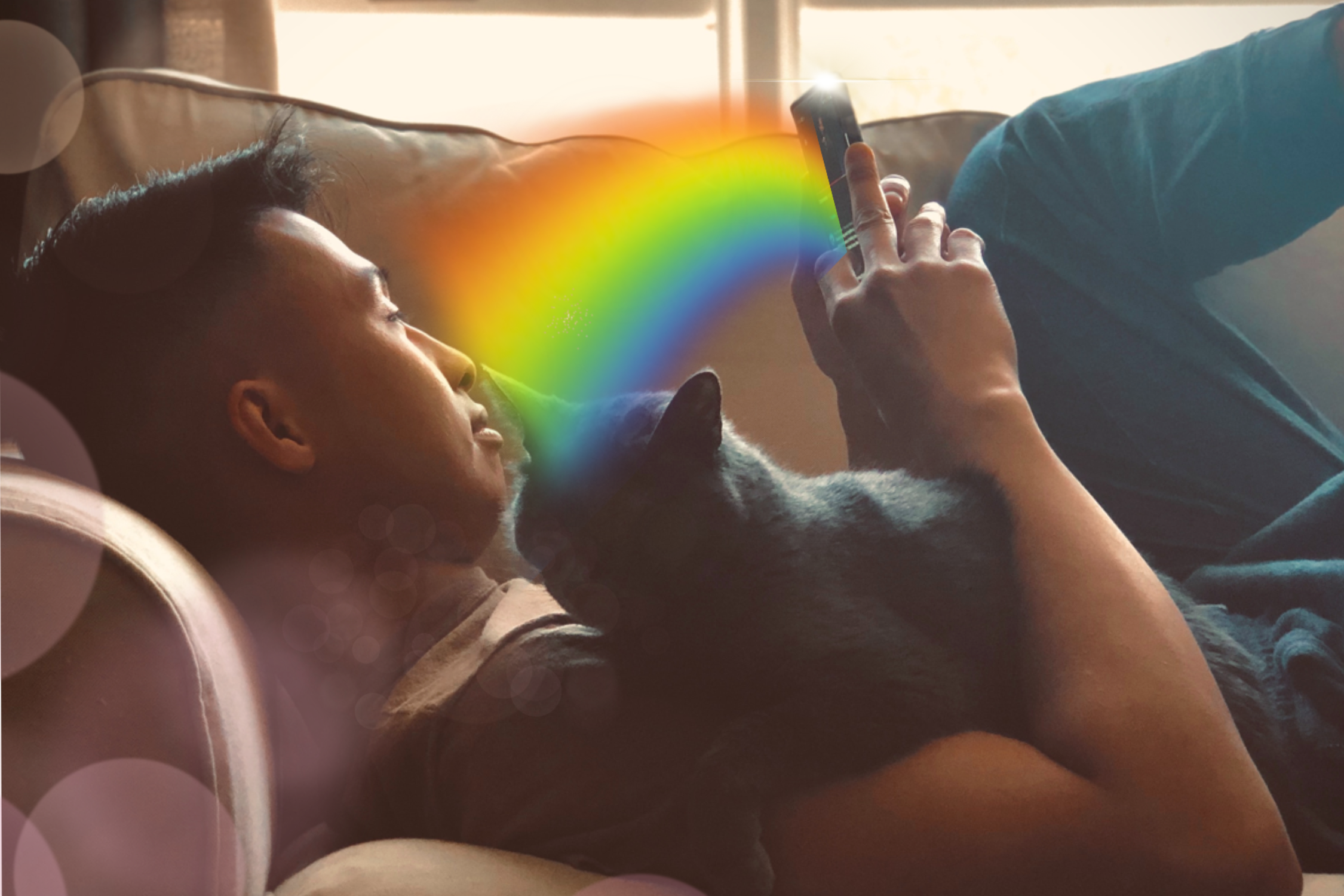Eight Queer NLP Papers You Shouldn’t Miss
There are many reasons not to go to ACL - your paper didn’t get in, you couldn’t get a visa, your employer can’t afford to send you, or in my case: you left academia and spending your vacation budget on a conference feels like a bad idea. Still, it’s hard to stay positive seeing your friends sipping cocktails and receiving best paper awards while you’re at home sipping iced water and debugging code. But fear not - even if you didn’t get to visit the amazing Queer in AI workshop at this year's ACL, here is a quick run through all the presented papers. Let’s go for an imaginary stroll along the posters and see some really cool research!
Gender-Fair Post-Editing: A Case Study Beyond the Binary: You may remember Manuel from this blog post, where we talked about his research on translating non-binary terms from English into German and Italian. This paper offers an in depth write up of his post-editing experiment: Manuel gave professional translators the task to post-edit translations to include gender-fair language and recorded their temporal and cognitive effort. The result: Using gender-fair language is actually not all that difficult.
Queer People are People First: Deconstructing Sexual Identity Stereotypes in Large Language Models: Anti-queer bias in LLMs has been talked about a lot on social media (and on this blog), so it’s great to see research supporting the anecdotal evidence with numbers. The authors anonymized Wikipedia biographies and then prompted GPT3.5 to produce sentences, assuming the person in question is either straight, gay or lesbian. The output showed consistently lower regard in the descriptions of queer people.
Happy, #horny, and valid: A keyness analysis of bisexual discourses on Twitter: What do people talk about when they use the hashtag ‘bisexual’ on Twitter? The authors use a set of filters to really drill down on how bisexuality is talked about and what other topics co-occur with the term. (paper link coming soon)
Critical Technopolicy and Reflexivity For Proactive Gender-Inclusive NLP: What influences the fairness policies that govern machine learning model development? Legal protections alone are not adequate to protect the queer community from harm and ethical considerations belong into each step of the development process. This paper suggests a new framework to approach the task of fairness with reflexivity questions that can guide researchers when designing machine learning systems. Some examples: In what ways am I checking how those who do not identify with binary gender are harmed by my approaches to my NLP task? How am I dismantling the boundaries of gender conformity in NLP technologies? As an AI practitioner, what steps am I taking to protect trans and non-binary people from being outed by the technologies I create?
“I'm fully who I am”: Towards Centering Transgender and Non-Binary Voices to Measure Biases in Open Language Generation: A second paper on anti-queer bias in LLMs, this time focused on the negative impact on trans and non-binary people. The authors look at misgendering and harmful responses to gender disclosure, using a data set of prompts that were curated by trans and non-binary people. They find that misgendering happens most often with singular “they” and neo-pronouns, while the disclosure of trans and non-binary identity generated most stigmatising and toxic output from the LLMs. It’s great to see a wide variety of non-binary identities covered in the research, like agender, genderqueer and genderfluid.
Platform trans-inclusion: on pronoun fields and commodification: Being able to put your gender identity or your pronouns in a special field on social media can be an act of empowerment, creating visibility and community. But what are the potentials of corporate gain and possible exploitation that come with this option? This research proposal looks at rainbow capitalism, company’s self-representation and the queer discourse about it in online spaces. (paper link coming soon)
Stereotypes and Smut: The (Mis)representation of Non-cisgender Identities by Text-to-Image Models: Text-to-image models are next in the long line of models harming the queer community. In the last blog post I talked to Eddie about his work and this is the (best paper award nominated!) paper that goes along with it. Get all the details on how text-to-speech models misrepresent trans people, how mitigation strategies are missing the mark and what a group of 36 trans interviewees actually wants from text-to-image systems.
“ChatGPT, how do I know if I'm queer?” The Opportunities of Personalized AI Sex and Queer Educators and Supporters: As a person who grew up in the aughts, I typed my questions about queerness furtively into a Google search bar at my local library. What happens today, if a person exploring their gender and sexuality asks ChatGPT? The authors examine this question and propose a framework for creating a chatbot that is reliable, personalised and queer. (paper link coming soon)
This post was written by Sabine Weber. Sabine is a queer person who just finished their PhD at the University of Edinburgh. They are interested in multilingual NLP, AI ethics, science communication and art. They organized Queer in AI socials and were one of the Social Chairs at NAACL 2021. You can find them on twitter as @multilingual_s



